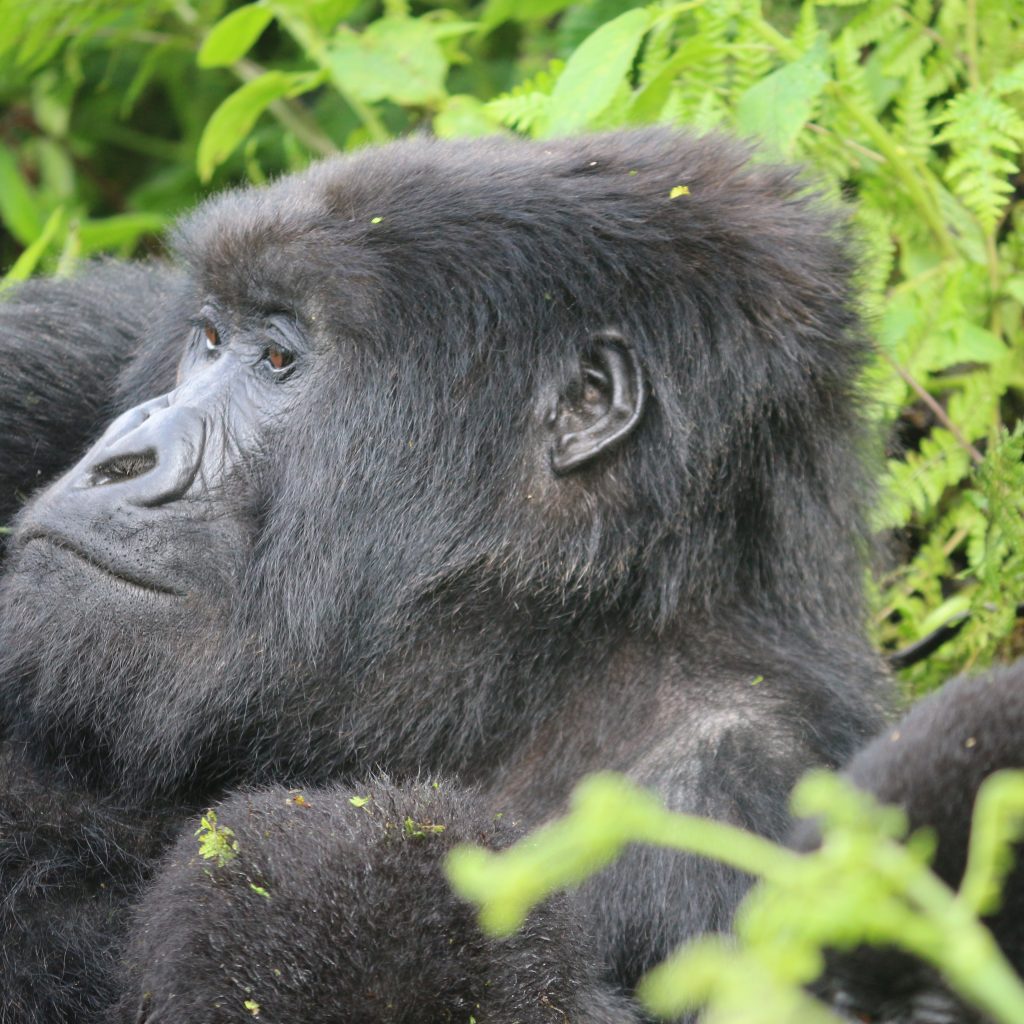Uganda Wildlife Parks offer amazing experience , Uganda is a landlocked country situated in the eastern region of Africa, is renowned for its ten national parks. These parks include Kibale forest, Mount Elgon, Rwenzori Mountains, Kidepo valley, Semuliki, Mgahinga Gorilla, Murchison Falls, Queen Elizabeth, Lake Mburo, and Bwindi impenetrable forest. The presence of these parks makes Uganda one of the most desirable safari destinations in Africa. These parks house a diverse range of wildlife, including endangered mountain gorillas, chimpanzees, 330 species of mammals, and over 1080 bird species.
Bwindi National Park One of the best Uganda Wildlife Parks


Bwindi National Park, situated in the southwestern part of Uganda, is one of the oldest tropical rainforests in the country and is highly diverse in terms of its flora and fauna. It boasts a plethora of plant species, with over 500 varieties, including some that have traditional medicinal uses. The park spans a total of 331 square kilometers and is home to more than 120 mammal species, including endangered animals like mountain gorillas, chimpanzees, elephants, primates, and antelopes. Additionally, it has over 350 bird species, with 23 being exclusive to the Albertine Rift Valley, such as the regal sunbird, yellow eye flycatcher, kivu ground thrush, Shelley’s crimsonwing, and purple breasted-sunbird, among others. Visitors to the park can enjoy a variety of activities, including gorilla tracking, gorilla habituation experiences, bird watching, and guided nature walks.
Kibale Forest NP
Uganda Wildlife Parks, Kibale Forest, situated in the western region of Uganda and to the north of Queen Elizabeth National Park, is a tropical rainforest that spans over an area of 795 square kilometers. Its altitude ranges from 1100 to 1600 meters above sea level. Kibale Forest is renowned as the world primate capital due to its small area being home to a plethora of primate species. Specifically, it boasts a total of 13 primate species, including Chimpanzees (as the main activity here, which are great apes and our close cousins), and more. Additionally, there are over 370 recorded bird species and 60 mammal species, such as antelopes, buffaloes, elephants, golden cats, mongooses, leopards, duikers, warthogs, bushbucks, and servals that can be found here. Visitors to Kibale Forest NP can engage in various activities such as chimpanzee tracking, chimpanzee habituation, nature walks, and bird watching.
Murchison Falls NP.
Murchison Falls National Park, situated in the western region of Uganda, spans over 3842 km2 and boasts the most potent tropical waterfall on the Nile River, the longest river in Africa. It provides a habitat for diverse wildlife, including 76 mammal species such as hippopotamuses, chimpanzees, crocodiles, waterbucks, elephants, giraffes, buffaloes, leopards, lions, Jackson’s hartebeest, Uganda cob, and warthogs, and 451 bird species. The park offers numerous activities such as the breathtaking Murchison Falls as major attraction, game drives, bird watching, guided nature walks, and boat cruises.
Mgahinga Gorilla NP
Mgahinga Gorilla National Park is situated in the southwestern region of Uganda, along the border with Rwanda and DRC, and spans approximately 35 square kilometers. It comprises three volcanoes, namely Mt Muhabura (with a height of 4127 m), Mt Mugahinga (3474 m), and Mt Sabyinyo (3645 m), and was declared a national park in 1991. The park is home to several wildlife species, including endangered mountain gorillas, golden monkeys, elephants, bushbucks, leopards, spotted hyenas, and duikers. The park offers several activities such as gorilla tracking, golden monkey tracking, bird watching, nature walks, mountain climbing, and cultural tours.
Queen Elizabeth NP the of Uganda Wildlife Parks



Uganda Wildlife Parks, Queen Elizabeth National Park is located in the western part of Uganda and spans approximately 1980 square kilometers, encompassing various habitats such as savanna grasslands, acacia woodlands, tropical forests, swamps, and volcanic craters. The park’s popularity is attributed to its rich biodiversity, including tree-climbing lions and opportunities for cultural exchange. The park is home to the “Big 4” (excluding rhinos), namely elephants, buffaloes, hippos, crocodiles, and waterbucks, as well as lions, hartebeests, giraffes, leopards, antelopes, warthogs, and chimpanzees.
Uganda Wildlife Parks, the park features crater lakes
Additionally to Uganda Wildlife Parks, the park features crater lakes that provide water and shelter to wildlife, and has recorded over 600 bird species such as the papyrus canard, shoebill, lesser flamingos, papyrus gonolek, African jacana, yellow wagtail, and grey-headed kingfisher. A tour of Queen Elizabeth National Park offers memorable experiences through activities such as tree-climbing lion tracking as the main attraction, bird watching, and, game drives, chimpanzee tracking, boat cruises, and nature walks. Moreover, tourists can participate in community and culture tours, storytelling, traditional dancing, and other activities.
